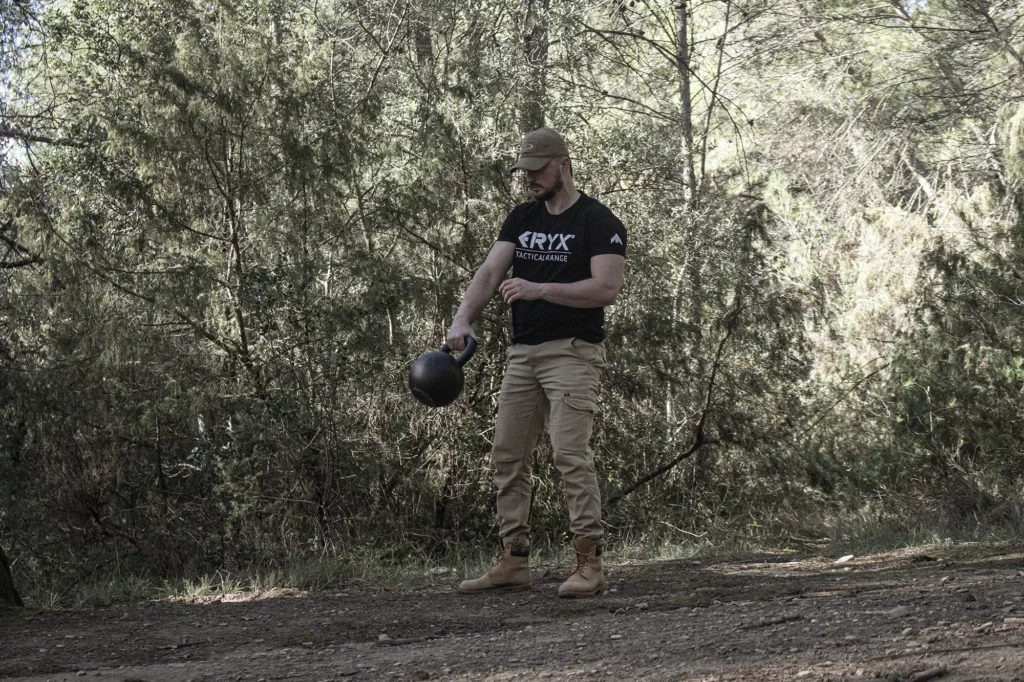What’s the difference between functional training and hybrid training ?
In the world of fitness and physical preparation, there are a multitude of approaches to improving performance and achieving specific objectives. Among these, two methods stand out for their effectiveness and unique philosophy : functional training and hybrid training.
Hybrid training aims to combine several, often opposing, training modalities to excel in various disciplines such as strength and endurance. Hybrid athletes seek to bypass the areas of interference between these physical qualities to perform simultaneously in strength and endurance sports.
Functional training focuses on preparing the body for everyday tasks, emphasizing movement, motor patterns and energy systems. The aim is to develop overall performance in order to meet the challenges of everyday life and improve health and general well-being.
This article explores in detail what distinguishes functional training from hybrid training.
What is hybrid training
Hybrid training is an approach that involves mixing several training modalities – usually two, sometimes more – often “opposite” on the spectrum of physical qualities : for example, strength/power and endurance.
The term “opposite” refers to the area of interference that can occur when an athlete tries to develop two antagonistic physical qualities. This area of interference could severely limit the practitioner’s progress in the two qualities he is trying to improve.
The hybrid athlete seeks to bypass this area of interference by performing in both strength sports such as weightlifting or athletic strength, and endurance sports such as running, cycling or swimming.
Hybrid training most often takes the form of powerlifting + ultra running. Some hybrid athletes are beginning to be known for their more than respectable performances in both sports : examples include Nick Bare and Fergus Crawley.
The real advantage of this training method is that you can perform at the same time. It’s not a question of lifting big amount of weights 6 months of the year to reach a PR, then switching to running for 6 months and running an ultra marathon.
No, these athletes are capable of achieving both performances on the same day.
What is functional training
Functional training is a type of training designed to prepare the body for life’s daily tasks. It’s a vision of the body as a whole, an approach to training through movement, motor patterns, physical qualities and energy systems.
The aim of functional training is to make you more effective in your everyday life, both at work and in your personal life. It allows you to be ready for more or less any situation. Above all, it makes you healthier and helps you feel good in body and mind. Feeling flexible, mobile, strong, explosive, enduring and so on has repercussions on the mind.
To achieve this result, it is necessary to work the body as a whole. Training must therefore incorporate all types of body movement, in all planes, with the aim of developing all physical qualities and stimulating all energy production systems:
- Bodyweight movements : crawling, pushing/standing up, crouching, walking, running, pulling/climbing, jumping
- Loaded movements : lifting, carrying, squatting, pushing, pulling, throwing, landing
- Movement planes : sagittal plane, frontal plane, transverse plane
- Energy systems : anaerobic alactic, anaerobic lactic, aerobic
In short, for a training program to be considered functional, it must involve all types of movement, in all planes of motion, and at different intensities, with the aim of developing all physical qualities:
- Movement capacity (flexibility, mobility)
- Muscular capacity (max strength, explosive strength and endurance strength)
- Work capacity (stamina, endurance)
- Coordination capacity (differentiation, reaction, rhythm, orientation, balance)
The difference between functional training and hybrid training
Functional training and hybrid training are similar in that they share a common objective : to develop several physical qualities at the same time.
However, functional training goes further.
Firstly, functional training doesn’t just seek to develop two opposing physical qualities simultaneously, but all the physical qualities at once to be as complete as possible.
What’s more, one of the main aims of functional training is to be able to adapt to any situation you encounter : whether you’re moving a load or moving your body, over a short or long distance, for a short or long time, and so on.
One type of training is not necessarily better than another. It all depends on your desires and goals.
Functional training focuses on the overall development of physical capacities to improve daily performance and general health. It aims to prepare the body for all possible situations by integrating a variety of movements and motor patterns. It’s all about being “good” everywhere.
On the other hand, hybrid training pushes the boundaries by combining often opposing training modalities, such as strength and endurance, to excel simultaneously in several disciplines. Hybrid athletes demonstrate a remarkable ability to perform in demanding sports, balancing the constraints and benefits of each type of training.
Choosing between these two approaches largely depends on your personal goals and preferences. Whether you’re looking to improve your overall fitness and daily well-being with functional training, or push your limits in a variety of disciplines with hybrid training, both methods offer unique and significant benefits.
 Português
Português
